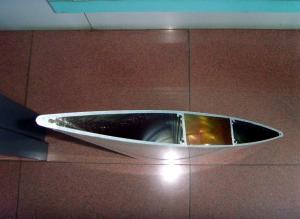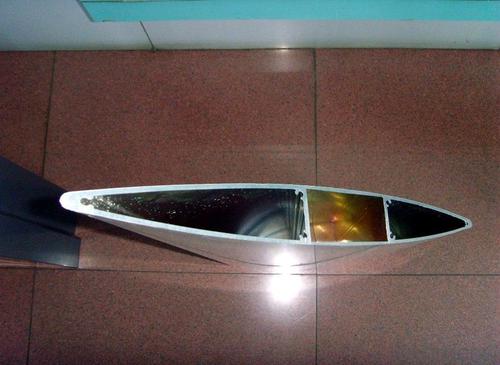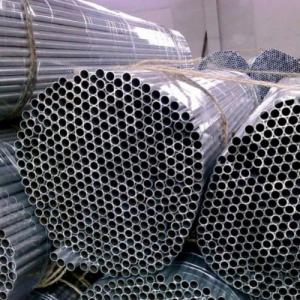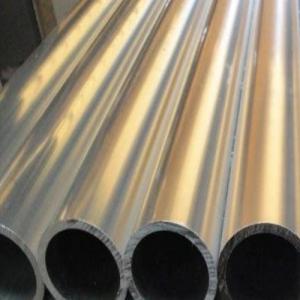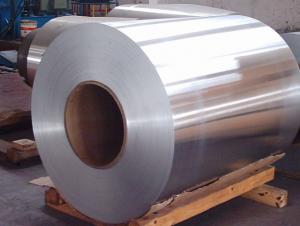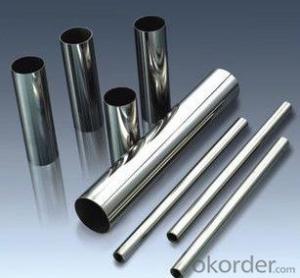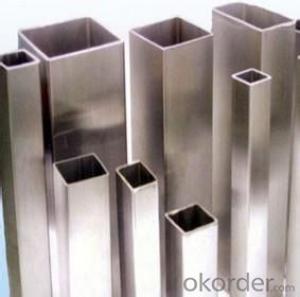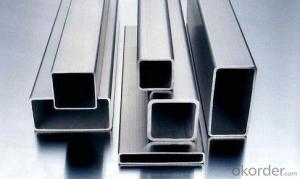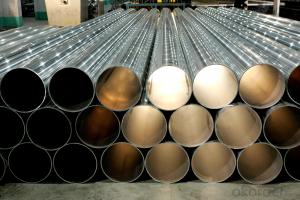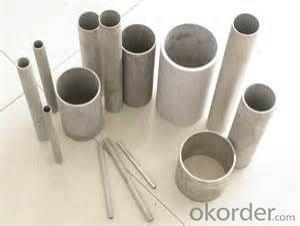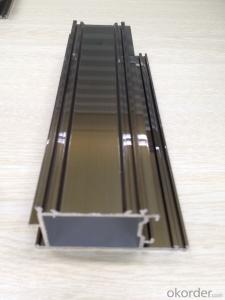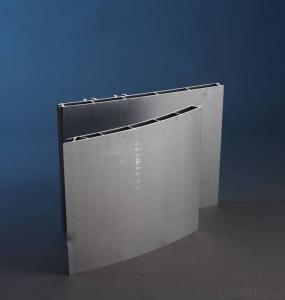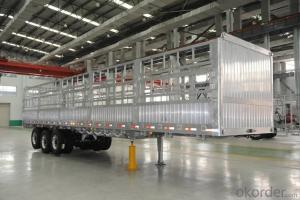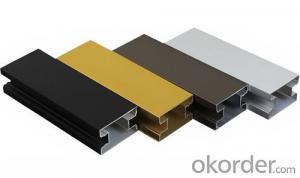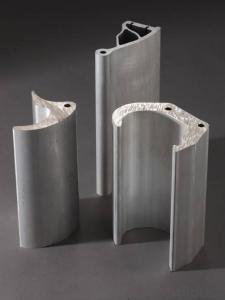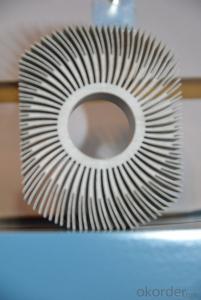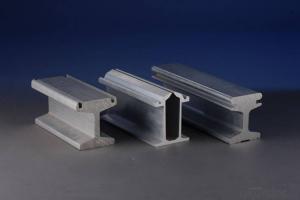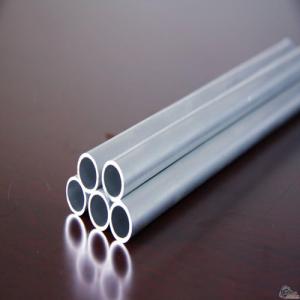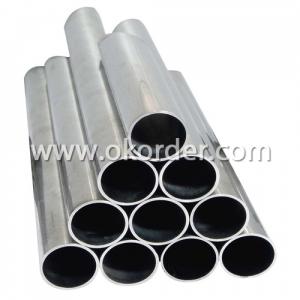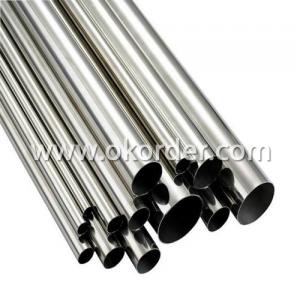Aluminum Pipes for Curtain Wall Aluminum Profile
OKorder Service Pledge
OKorder Financial Service
You Might Also Like
We are the largest aluminum profilemanufacture in
Please check the details as follows:
Material | Alloy Aluminum 6063,6061,6005,6082 or customer nominated |
Temper | T3, T4, T5, T6 and other |
Surface | Anodize, electrophoresis, powder coating, PVDF coating, wood grain painting, etc. |
Colour | Any colour based on Standard Germany RAL Mark |
Length | Not more than 16 meters |
Good Package | Inner plastic film /outside carton/wooden pallets |
Payment Method | T/T, L/C, etc |
Delivery Time | Normally 2-4 weeks, Delivery time can be consulted. |
Press Machine | 500-12500 tons all together 93 press lines. |
Fabrication | 1. Curtain wall;2. Drilling; 3. Bending; 4. Cutting; 5. etc. |
Certificate | ISO/TS 16949,DNV,IRIS,CCS,AFA,etc. |
Dies | 1. Using our dies, no fee; |
2. Using customer drawing, opening dies, usually about 5~50 tons then the dies cost can be refunded. | |
3. Die cost is negotiable base on the order quantity | |
Capability | Annual output 800,000 tons |
- Q: Why is the copper tube of AUX air conditioning aluminum tube?
- Copper tubes are often used as connecting pipes for air conditioners. Air conditioning aluminum tube is also a kind of non-ferrous metal pipe.
- Q: My air conditioner is aluminum, I want to shift, does not change the pipe can also be used?
- Can continue to useDo leak test after moving machine
- Q: Who has good refrigerator, aluminum tube butt joint method, welding technology?. Thank you
- I can weld the copper tube and the aluminum tube, but I'm not sure I can make it clear. Pipe butt welding to argon arc welding, in the middle two aluminum tubes with a brass copper aluminum welding, because just a little bit more simple.
- Q: External diameter 80mm, diameter 23mm, length 500mm, want to use iron pipe to do external mold, internal mold with iron pipe or solid iron rod processing into taper column (and spray boron nitride release agent), do not know such a practice, OK? In this mode with the taper approach in the aluminum liquid after solidification can easily remove aluminum (because the coefficient of thermal expansion than iron, I am afraid after cooling tubes will (lock core) trouble experienced teacher for advice! Thank you! StopWell, I'll make a small tube of plaster. If the inner mold is not working, will it be stuck together with the aluminum parts? It's not good to clean it
- A drill bit that is not so long can be welded longer.Or you can't buy this round bar.
- Q: 1.2mm thickness of the aluminum tube, why measured only 1.0mm thick?
- There is an error relationship, and may be affected by the environment, as well as the physical properties of the material itself, such as thermal expansion, cold contraction and so on
- Q: Are aluminum pipes resistant to UV radiation?
- Indeed, aluminum pipes exhibit a general resistance to UV radiation. The inherent properties of aluminum render it highly resilient against the corrosive and deteriorative impacts resulting from exposure to UV rays. This resilience is attributable to the formation of a slender oxide layer on the aluminum's surface, which serves as a protective shield against the detrimental effects of UV radiation. Nevertheless, it is important to acknowledge that prolonged and intense exposure to UV radiation can still induce a certain level of surface discoloration or fading on aluminum pipes.
- Q: How do aluminum pipes compare to carbon steel pipes in terms of cost?
- Aluminum pipes tend to be more expensive than carbon steel pipes.
- Q: 1100 what's the match between the aluminum material and the material? Thank you
- 1100, the material is pure aluminum, if you want to match, you can choose the 1 Department of aluminum.
- Q: What is the difference between the 6061-T6 aluminum pipe and the common aluminum pipe?
- Alcoa 6061-T651 has excellent processing properties, corrosion resistance, high toughness and processing after deformation, color film is easy, excellent oxidation effect and excellent characteristics of good.Al-Mg-Si series alloy, medium strength, with good plasticity and excellent corrosion resistance. Especially the tendency of non stress corrosion cracking, which has good weldability, good corrosion resistance and cold workability, is a widely used and promising alloy. It can be anodized, painted, or painted with enamel. It is suitable for building decoration materials. It contains a small amount of Cu, so the strength is higher than 6063, but the sensitivity of quenching is higher than that of 6063. After extrusion, the air can not be quenched, and it needs to be solved again by solid solution treatment and quenching aging so as to obtain higher strength.
- Q: resulting in the pipe can not be used after folding, how to deal with? Fifteen08 years to buy three AUX air-conditioning, moving this year, the pipe was folded, and then installed, AUX said after the sale of the pipe can not be used, to replace all new, because the aluminum pipe can not be welded. We all know that the tube is very expensive, then bought 5 meters or so, I think it will not have to spend money again, I did not expect, because of this reason, even for old pipes, the installation of new tubes, but also spend nearly 1000 yuan. When I bought it, I didn't think they would use the aluminum tube. I thought it was copper. It was entirely cost saving by the factory, which made the consumer pay the bill. I was so angry that I didn't buy anything from AUX any more. Would you like to ask if you have ever touched this situation? What can you do to reuse the old pipes?
- You only have to spend this money, or who help you install.
Send your message to us
Aluminum Pipes for Curtain Wall Aluminum Profile
OKorder Service Pledge
OKorder Financial Service
Similar products
Hot products
Hot Searches
Related keywords
